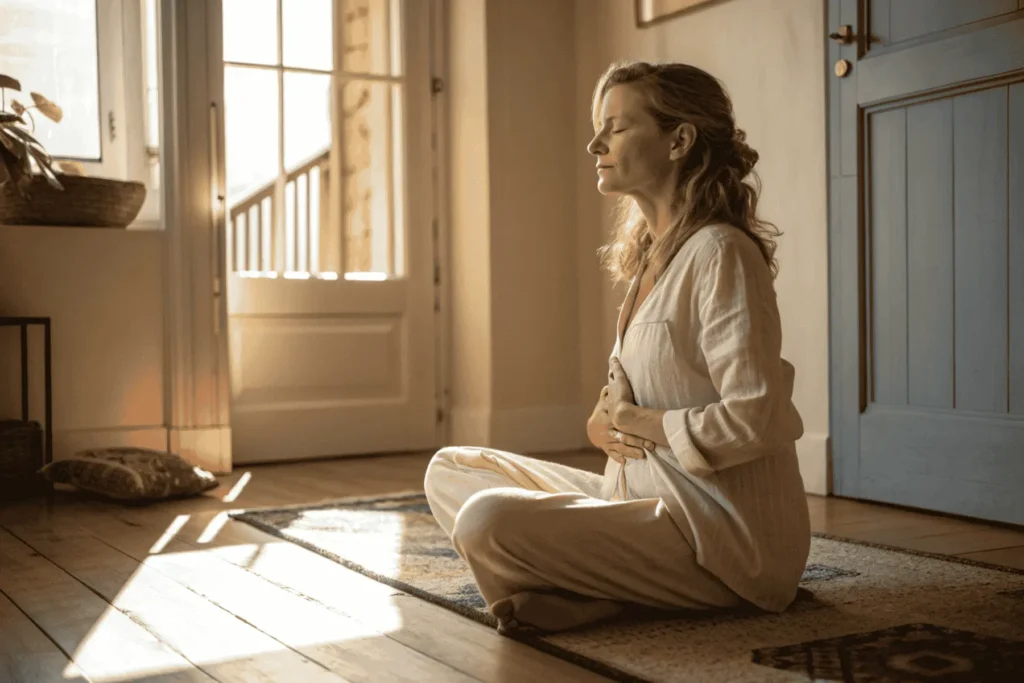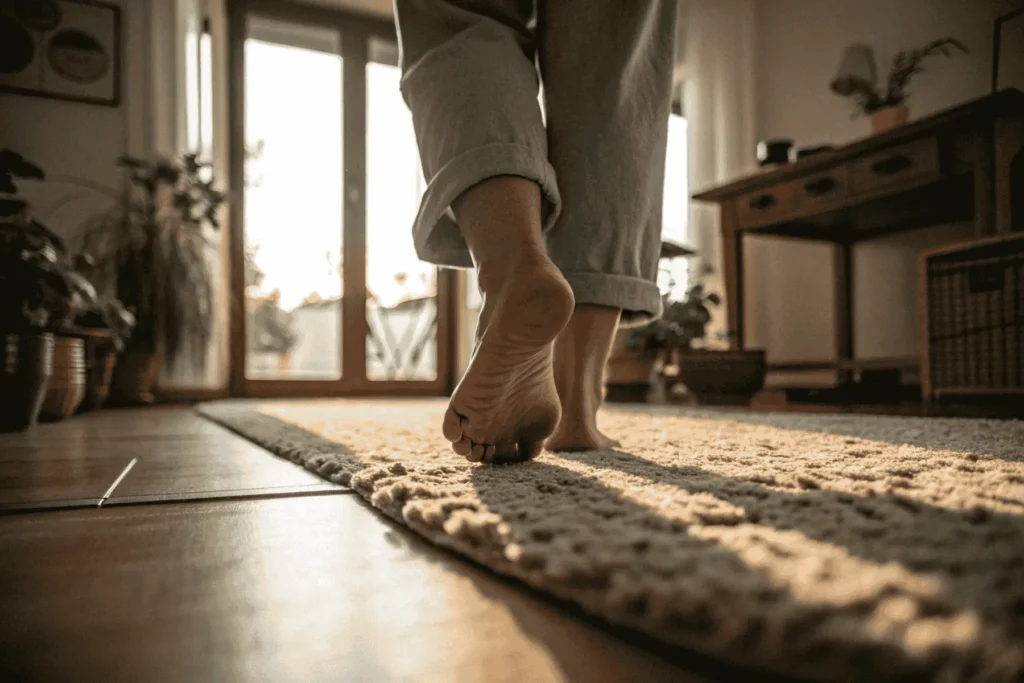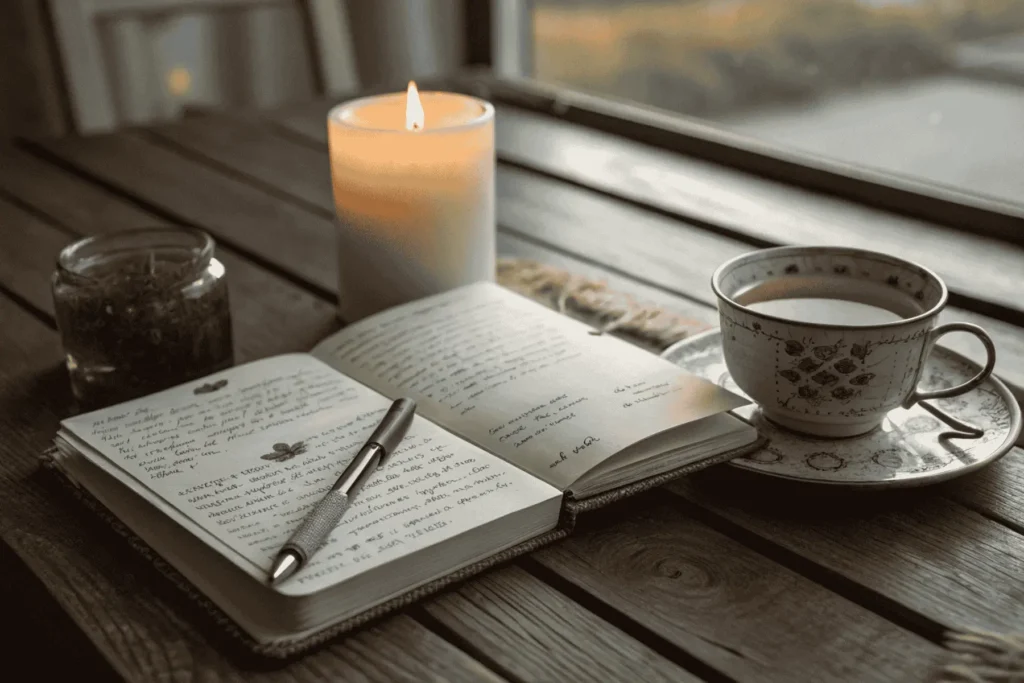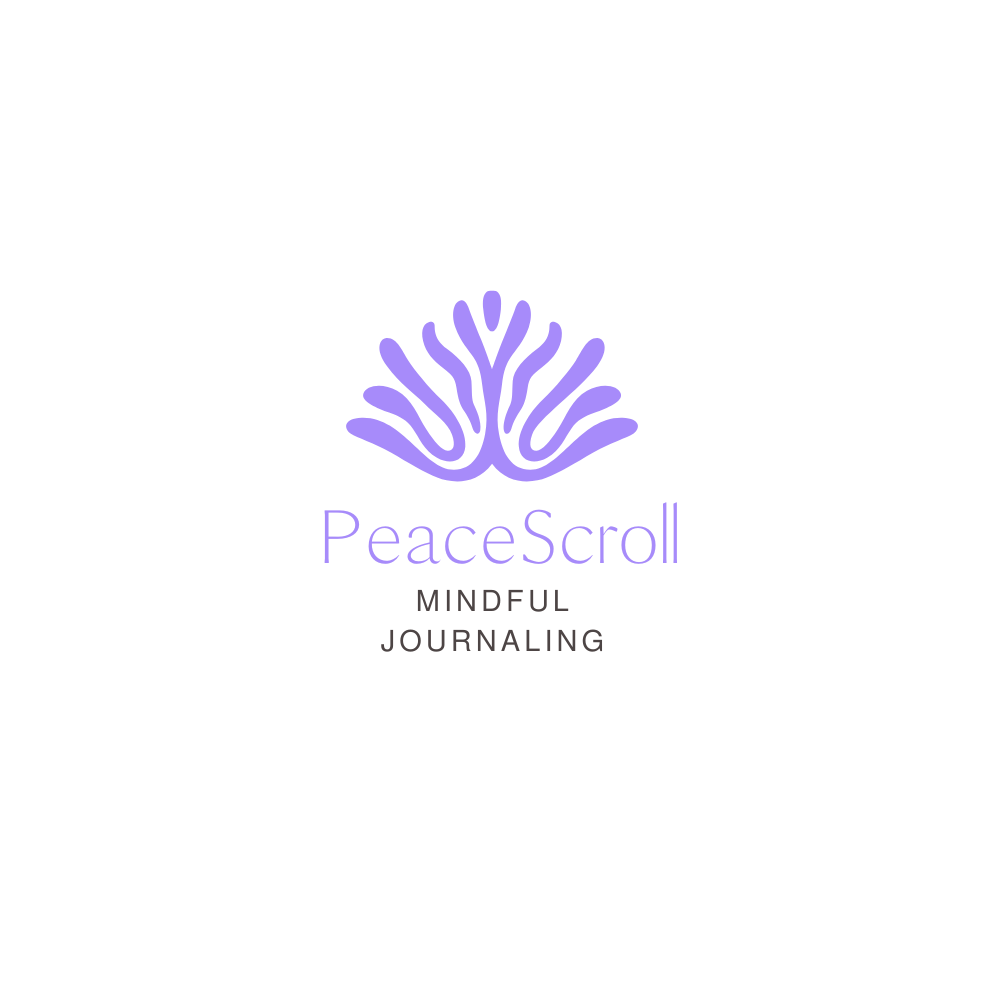These gentle mindfulness exercises are not another task to add to your day, another mountain to climb, or another skill to perfect. Think of them, instead, as a soft remembering. They are a quiet, intentional return to the sanctuary you already carry within you, a sanctuary that may have been drowned out by the noise of the world but has never truly disappeared. This is an invitation to gently place down the heavy weight of all that you are carrying—the worries, the plans, the expectations—and simply come home.
Settle into your sacred space now, wherever you are. Allow your shoulders to melt away from your ears, and soften the space between your eyebrows. Unclench your jaw. Let your breath exist without any demand placed upon it, allowing it to be shallow or deep, fast or slow. The world outside, with its endless chorus of notifications and its relentless pursuit of more, can wait. Here, in this quiet, digital space, you are held. You are invited only to be.
This is not knowledge for your mind to acquire, but an intimate truth for your body to remember. In a culture that worships momentum, choosing to pause is a profound act of devotion to your own soul. The permission to meet yourself, exactly as you are in this moment, with a tenderness you might usually reserve for others, is a core practice in reconnecting with your feminine energy. Let this be a re-acquaintance with the profound, unassuming peace of the present, a part of your own soul that has never, ever left.
Table of Contents
Why These Mindfulness Exercises Are Actually Deep Acts of Self-Kindness
We often hear that mindfulness is about “paying attention on purpose,” but that definition can feel cold. Let’s re-frame it with more tenderness: mindfulness, which the American Psychological Association defines as a moment-to-moment awareness of one’s experience without judgment, is the art of arriving in your own life with boundless compassion. The goal isn’t to force your thoughts into silence, but rather to hold them with a gentle, compassionate awareness.
Most of us live with a constant inner narrator, a voice that judges, plans, and worries. This voice is not who you are. They offer you the gift of a sacred pause, a moment to stand back and witness your inner world without getting swept away by it. You are not the storm; you are the sky that holds the storm. Instead of fighting the racing thoughts or judging the difficult feelings, these gentle mindfulness exercises invite us to simply notice them, a practice you can deepen through emotional waves journaling.
This is a form of deep, body-based healing, similar to the somatic exercises for nervous system regulation that teach the body safety. When we experience chronic stress, our bodies physically hold the tension—in our tightened shoulders, our clenched jaw, our shallow breath. Gentle mindfulness exercises are a direct signal of safety. They are a way to communicate, through the language of the body, that the perceived threat is over. This compassionate attention is a form of vagal activation, a whisper to the core of your being that you are safe. This is a vital first step in learning how to heal your nervous system from the inside out.
Rituals for Returning to the Present Moment
These are not tasks to complete, but invitations to receive. You cannot fail at them. Choose one that whispers to your heart. Approach it not with the goal of “doing it right,” but with the simple, open intention of being present with yourself and weaving these moments into your slow-living daily rituals.
The Anchor of Your Breath

Your breath is the most patient and loyal companion. It asks nothing of you but to be noticed. Find a comfortable seat or lie down. Gently close your eyes if it feels safe. Gently invite your attention to rest on the simple, physical sensation of your breath as it enters and leaves your body. Your mind will wander; that is its nature. When it does, gently guide your awareness back to the anchor of the next breath. This simple return to the breath is a portable sanctuary. For more guided practices, you can explore these simple online breathwork exercises.
Find a comfortable seat or lie down. Gently close your eyes if it feels safe. Gently invite your attention to rest on the simple, physical sensation of your breath as it enters and leaves your body. You don’t need to change it, deepen it, or fix it. Let it be exactly as it is. Just notice its temperature as it passes your nostrils—cool on the inhale, warm on the exhale. Notice the gentle, rhythmic rise and fall of your belly or your chest, like a soft, steady wave. Your mind will wander; that is its nature. When it does, gently and without judgment, like guiding a lost puppy back home, guide your awareness back to the anchor of the next breath. This simple return to the breath is perhaps the most fundamental of all mindfulness exercises, and it is your portable sanctuary.
A Ritual of Sensory Listening
The world is always whispering its secrets to us, but we are often too lost in the monologue of our own thoughts to hear them.
Close your eyes. Allow your ears to open wide. First, listen for the furthest sound you can detect. The hum of a distant road, a siren far away, the wind in the trees outside. Just let the sound be, without needing to name or analyze it. Then, like a camera lens gently refocusing, allow your awareness to slowly draw closer. Listen to the sounds within the room. The soft hum of a computer, the creak of the floorboards, the ticking of a clock. Finally, bring your attention to the closest sound of all: the sound of your own quiet breathing. These kinds of sensory mindfulness exercises gently pull you out of the abstract past or future and land you softly in the living, breathing reality of right now.
The Texture of This Moment
Your hands are a direct portal to the present. They are always touching something, always in contact with the world.
Gently place your hand on a surface near you—the fabric of your clothes, the smooth coolness of a cup, the solid wood of a table, or the soft skin of your own arm. Close your eyes and let your entire universe shrink to that single point of contact. Simply notice the sensation. Is it soft, rough, warm, or cool? Can you feel the subtle texture, the gentle pressure, the temperature? For thirty sacred seconds, let this simple, tactile sensation be your whole world. This embodied practice instantly grounds your awareness, pulling it from the swirling chaos of the mind into the quiet truth of the body. Such simple, tactile mindfulness exercises can be profoundly calming.
A Mindful Gaze of Wonder
We look at things all day long, our eyes scanning and judging, but how often do we truly see them with fresh eyes?
Choose a simple, ordinary object in your space: a pen, a leaf from a plant, a favorite stone, a crack in the pavement. Allow your gaze to rest on it softly, as if you have never seen it before in your life. With childlike curiosity, let your eyes trace its outline. Observe the gentle dialogue between light and shadow as they grace its form. See the subtle, surprising variations in its color and texture. Gaze at it not to understand it, but simply to appreciate its existence. In this quiet act of deep seeing, the chattering mind often falls respectfully silent.
The Earth Beneath Your Feet

When your thoughts feel like a whirlwind, connect with the one thing that is always holding you: the earth.
If it feels nurturing to your body, you might rise and feel the steady welcome of the floor beneath your feet. Rock your weight gently from side to side, from your heels to your toes. Feel the solid, unwavering support beneath you. If you can walk, do so slowly, mindfully. Feel the heel of your foot connect with the ground, feel your weight roll through the sole, and feel your toes lift off. Match your breath to your steps. This is not about getting anywhere; it is about being fully present in the journey of each single step. These kinds of grounding mindfulness exercises are a powerful reminder that you are supported and connected.
A Single, Mindful Sip
We eat and drink on autopilot, our minds miles away. Let one sip be a profound act of presence.
Prepare a cup of tea, water, or any comforting beverage. Before you drink, simply hold the cup. Feel its warmth or coolness in your hands. Notice its weight. See the color of the liquid. Bring it to your lips and inhale its aroma. Then, take one single, deliberate sip. Let the liquid rest in your mouth for a moment. Notice its taste, its texture, its temperature. Follow the sensation as you swallow. That’s it. In that one sip, you have practiced being fully alive and awake to a simple pleasure. This single, sacred moment of presence holds the very essence these gentle practices hope to offer.
Today’s Journaling Invitation

→ In the stillness you just touched, what quiet truth was waiting for you?
Allow your hand to trace your inner whispers, letting the ink flow like a quiet river onto the page. Do not worry about grammar or coherence. Simply witness what you feel. This space is a safe harbor, just for you, and a gentle first step toward the deeper inquiry found in shadow work questions.
Deeper Reflection: A Whisper for Your Heart
→ What is one simple, beautiful thing in your life you could return your attention to tomorrow?
Close your journal now. Place a hand over its cover, or perhaps over your own heart.
Inhale softly. Release your breath with a gentle, lengthened sigh.
That was enough.
Perhaps one word or phrase from the page continues to glow in your awareness. Let it be a quiet, luminous companion for the rest of your day—a reminder of the profound peace you can always, always come home to.
